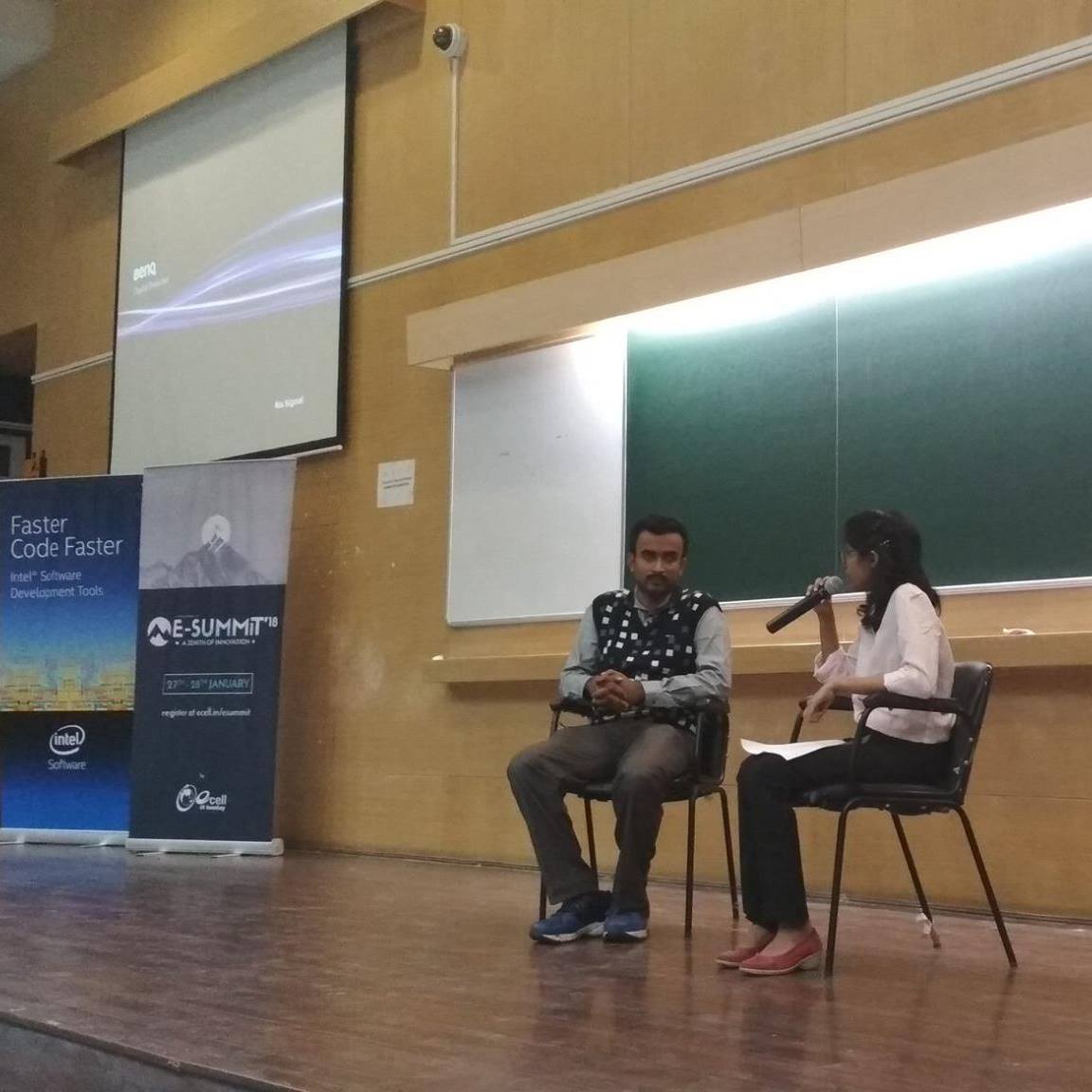Talks
Tech Talks
“Back Telemetry of 3-Coil WPT and 2-Coil WPT for Biomedical Implants” HKUST, Hong Kong, 2022
Flyer of the talk

Glimpse of the presentation

“Power and Data Transmission Efficiency Improvement of an Encrypted Wireless Power Transfer System” HKUST, Hong Kong, 2023
Synopsis -
Implantable Medical Devices (IMDs) have been widely used to tackle different health issues. With the advancement in VLSI technology, sophisticated IMDs have been developed for extending sensing and stimulation capability with low-power wireless data transmissions. Due to loading and coupling variations, the rectified DC voltage at the receiver’s output of the IMD is not steady. Conventionally, a global control loop that combines the power and data transfer links is designed to counteract the above variations. A detection (or tertiary) coil, co-planar with the transmitter coil, is used to receive the backscattered signal at the transmitter side. The second part of this thesis discusses the improvement of a previously designed retinal implant. In the first phase, a framework is designed for improving the tertiary coil through analytical guidelines, and an area-saving inner-tertiary coil structure is developed for a closely packed head-mounted retinal stimulation system. In the second phase, an on-chip embedded encrypted data transmission system is developed using lightweight prince cipher and eFUSE silicon IP provided by the foundry. The standalone eFUSE IP is modified to relax input pin limitations and high current consumption issues during the initialization of the IMD. The proposed divide-and-conquer approach maintains the cipher strength and reduces the area and power consumption of the cipher circuits by 2.7 and 5.1 times, respectively. The whole system with the optical nerve stimulator is fabricated with 0.18 um BCDlite (Bipolar-CMOS-DMOS) process, and measurement results show the proposed encryption scheme is nearly impossible to be cracked by a modern brute-force parallel key-guessing machine. Later, a complete WPT system with transmitter and receiver chips developed in 0.18-micrometer BCDlite is presented. The all-NMOS transmitter has fast high-side level shifters based on the current mirror principle and adaptive dead-time controller, reduces the delay difference between the high-side and low-side gate driving paths. The proposed adaptive digitally controlled active rectifier of the receiver achieved high efficiency by eliminating losses due to turn-on/off delay, reverse current, and multiple pulsing. The adaptive delay compensation circuits prevent degradation of efficiency and link gain at different PVT (process, voltage, temperature) corners. The fast delay control loop adjusts the durations of delay by at least two times faster than state-of-the-art architectures. In closed-loop control of the WPT system, the receiver regulates the output voltage using a local linear current-sink-based regulator. In addition, wireless hysteretic control of a reconfigurable power amplifier achieves global power regulation. The proposed design has a higher level of integration and lower circuit complexity than previous works and achieves a higher operating range and a faster load-transient response. Furthermore, under high coupling conditions, split frequency locations can be used for FSK-based closed-loop control that allows for simultaneous wireless power and data transfer. The frequency-modulated power carrier is processed by a frequency-to-amplitude converter of the receiver and is converted to an amplitude-modulated signal. A rule-based approach is adopted in discussing the trade-off among link gain, bandwidth, and efficiency as a function of distance during split-frequency data transfer.

Tech Tutorials
synopsis -
Business Talks
“Medtech Entrepreneurship In India” IIT Bombay, India, 2017
Synopsis - During the e-summit 2017 of IIT Bombay, I briefly discussed my experience as a winner of Eureka 2016 (social category). I talked about the ups and downs of my startup with a general focus on medtech entrepreneurship in India.

